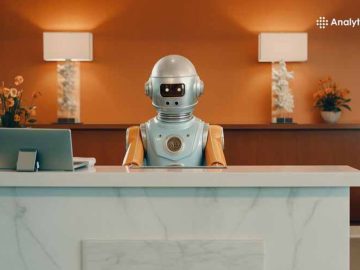One of the more eye-catching applications of generative artificial intelligence (AI) to emerge in recent years is unquestionably text-to-image generators. These tools take in a simple textual description of what the user wants, and through complex algorithms trained on vast datasets, create detailed and often stunningly realistic images that match the given prompt. They can produce everything from lifelike portraits to fantastical landscapes, making them the new favorite tool of many artists and designers that want to visualize concepts and prototypes rapidly, and also educators and researchers who wish to find new ways to illustrate ideas and data.
But other people are left scratching their heads, uncertain what to make of these new AI-powered tools. After all, how useful is an image of a monkey riding a rhinoceros on Mars anyway? Proponents of these systems might argue that generative AI sparks the imagination, and can be used in all manner of creative pursuits that we might not even be able to imagine just yet. And YouTuber Creative Mindstormsâ latest creation adds a lot of credence to that claim. Creative Mindstorms built a LEGO PixelArt Robot that turns AI-generated pixel art into physical art made with LEGO bricks.
Building the hopper to store pixels (ð·: Creative Mindstorms)
The robot itself is composed of a pile of Technic bricks and gears to make a movable plate, much like the bed of a 3D printer. There is a removable 32 x 32 grid of studs built into the plate to serve as the canvas. Another movable element runs perpendicular to the direction the plate moves as it grabs 1 x 1 bricks from a hopper before placing them in the proper position on the canvas. LEGO Mindstorms motors and a Smart Brick control the operation of the robot, and a touch sensor is used to periodically reset the position of the movable components to prevent drift over time.
Before the robot can get to work, it needs instructions. These are provided by custom software written by Creative Mindstorms. First, the user of the system types a prompt indicating the type of image that they would like to have created. This prompt is sent to OpenAIâs DALL-E 3 image generator. The 1024 x 1024 result image is then scaled down to 32 x 32 pixels to make it compatible with the size of the LEGO canvas. This is done in a way that is designed to avoid distortion. Next, the millions of colors that may be present in the images are replaced with the closest option available in the 15 colors that the robot has access to. The user is shown a preview, and if it looks good, they can send it off to the LEGO robot for printing.
The results are very impressive. It is amazing enough that it actually works â the fact that the images look so great is just icing on the cake. As you might guess, this is a complex build and requires a lot of specialized LEGO parts, so unless you want to devote the next month of your life to building a LEGO PixelArt Robot, I would suggest that you just watch the video instead.


![AI Chatbots Software Market [2024] AI Chatbots Software Market [2024]](https://virtual-coach.com/wp-content/uploads/2024/07/industry-trends-analysis-360x270.jpg)

